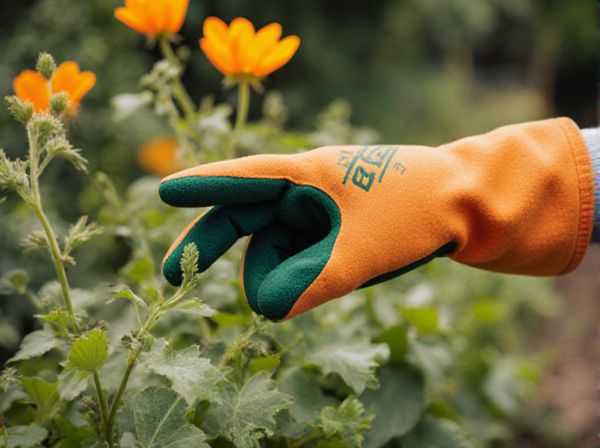
Summer dormancy vs Winter dormancy Illustration
Summer dormancy and winter dormancy are adaptive strategies plants use to survive unfavorable conditions by temporarily halting growth. Summer dormancy occurs during high temperatures and drought, helping plants conserve water and energy, while winter dormancy is triggered by cold temperatures, protecting plants from frost damage. Both dormancy types optimize plant survival and energy allocation across seasonal environmental stresses.
Table of Comparison
| Aspect | Summer Dormancy | Winter Dormancy |
|---|---|---|
| Trigger | High temperature, drought | Low temperature, reduced daylight |
| Duration | Typically several weeks to months in summer | Several months during winter |
| Physiological Response | Growth pause, reduced metabolic activity | Growth cessation, metabolic slowdown |
| Common in | Warm climates with dry summers | Cold climates with harsh winters |
| Survival Strategy | Conserves water, avoids heat stress | Protects against freezing, conserves energy |
| Examples | Some perennial grasses, desert plants | Deciduous trees, many temperate zone perennials |
Understanding Dormancy in Plants
Summer dormancy in plants is an adaptive mechanism triggered by high temperatures and drought conditions, allowing them to conserve resources during peak heat. Winter dormancy, on the other hand, is primarily induced by low temperatures and reduced daylight, enabling plants to survive cold seasons. Both forms of dormancy involve metabolic slowdown and growth cessation but are regulated by different environmental cues critical for plant survival.
Key Differences Between Summer and Winter Dormancy
Summer dormancy occurs in plants as a response to hot, dry conditions, reducing metabolic activity to survive drought stress, while winter dormancy is triggered by cold temperatures, slowing growth to withstand freezing environments. During summer dormancy, plants typically conserve water and limit photosynthesis, whereas winter dormancy involves mechanisms like leaf shedding and bud hardening to protect against frost damage. The timing, environmental triggers, and physiological adaptations distinctly characterize summer and winter dormancy as survival strategies.
Environmental Triggers for Summer Dormancy
Summer dormancy in plants is primarily triggered by environmental factors such as high temperatures, intense sunlight, and drought conditions that signal water scarcity. Unlike winter dormancy, which responds to decreasing temperatures and shorter daylight hours, summer dormancy adapts plants to survive extended periods of heat and aridity. Understanding these triggers helps optimize irrigation and land management practices to sustain plant health during extreme summer conditions.
Environmental Triggers for Winter Dormancy
Winter dormancy in plants is primarily triggered by environmental cues such as decreasing temperatures and shorter daylight hours. These factors signal the approach of unfavorable growing conditions, prompting physiological changes like reduced metabolic activity and bud dormancy. Cold exposure, or chilling requirement, is essential for breaking dormancy and ensuring synchronized growth in spring.
Plant Species Exhibiting Summer Dormancy
Certain plant species like Mediterranean grasses, geophytes such as tulips and crocuses, and succulents exhibit summer dormancy to survive extreme heat and drought conditions by ceasing growth and conserving resources. This adaptive mechanism involves metabolic slowdown and leaf senescence, allowing plants to endure arid summer months while maintaining viability for regrowth in favorable seasons. Unlike winter dormancy, which protects against cold stress, summer dormancy is critical for resilience in climates with hot, dry summers.
Plant Species Exhibiting Winter Dormancy
Certain plant species such as deciduous trees and many perennials exhibit winter dormancy, a survival strategy involving metabolic slowdown to withstand cold temperatures and reduced daylight. This form of dormancy allows plants to conserve energy by halting growth processes and shedding leaves to minimize water loss during freezing conditions. Winter dormancy differs from summer dormancy, which typically occurs in arid climates where plants enter dormancy to avoid heat and drought stress.
Adaptations for Surviving Harsh Seasons
Plants exhibit distinct adaptations for surviving harsh seasons through summer and winter dormancy strategies. Summer dormancy involves reducing metabolic activity and shedding leaves to conserve water and protect against drought and heat stress, commonly seen in Mediterranean and arid climates. Winter dormancy triggers physiological changes like antifreeze protein production and nutrient storage to withstand freezing temperatures and limited sunlight in temperate and cold regions.
Gardening Strategies for Dormant Plants
Summer dormancy requires gardeners to reduce watering and avoid fertilization, as many plants conserve energy under heat stress, unlike winter dormancy where protection from frost and adequate moisture are crucial. Incorporating mulch helps regulate soil temperature and retain moisture during summer dormancy, while insulating materials shield winter-dormant plants from freezing temperatures. Tailoring irrigation schedules and mulching techniques to the specific dormancy period enhances plant resilience and promotes healthy regrowth in both seasonal cycles.
Common Mistakes in Managing Dormancy
Confusing summer dormancy with winter dormancy often leads to improper irrigation schedules, causing plant stress and reduced growth. Many gardeners mistakenly reduce watering during summer dormancy when some species still require minimal moisture to sustain root health. Failing to adjust fertilization according to dormancy type also hampers nutrient uptake and delays recovery.
Maximizing Garden Health Through Seasonal Dormancy
Maximizing garden health through seasonal dormancy involves understanding the distinct processes of summer dormancy and winter dormancy in plants. Summer dormancy helps plants conserve water and survive extreme heat by temporarily halting growth, while winter dormancy protects against cold temperatures and frost damage by slowing metabolic activities. Properly managing irrigation, mulching, and soil conditions during these dormant phases enhances plant resilience and promotes robust growth during active seasons.
Summer dormancy vs Winter dormancy Infographic

 gardendif.com
gardendif.com